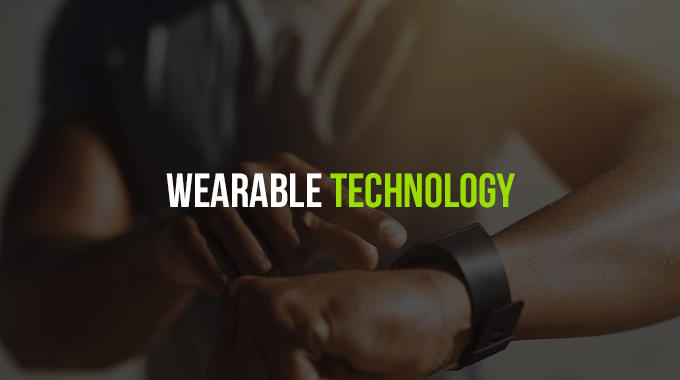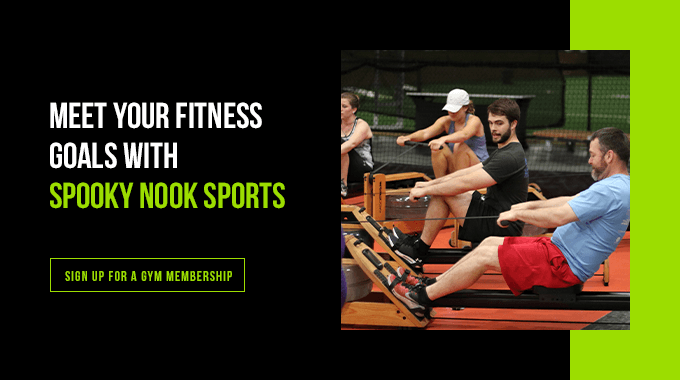
Subscribe to the Blog
Stay up to date
Fitness trackers are excellent, user-oriented devices perfect for tracking fitness goals, exercise levels and mapping out training. More sophisticated wearable technology in sports can monitor stride rate, ground contact time, stroke rate and force analysis, assisting athletes in perfecting their performances. Incorporating these devices into a workout routine provides real-time monitoring for improved results and more accurate data.
If you're interested in these helpful devices, understanding what they do, how they work and what they can offer you will help you choose the best fitness tracker for your needs.
Fitness Trackers
Wearable technology is a popular, convenient tool for measuring activity, but what do fitness trackers do? Depending on the model and its features, fitness trackers can track various health and exercise-related data to help you stay fit. They're the perfect way to help you easily fit fitness into your life since they make measuring activity quick and accessible. Some trackers include music, text and photo features for displaying messages and controlling music.
Fitness trackers use different sensors to measure and collect activity data — balance, movement, light, electrical current and altitude are all sensors a fitness tracker may have. If you've ever wondered how fitness trackers monitor your information, the answer is sensors. Some standard sensors in fitness monitors include:
- 3-axis accelerometer: The accelerometer senses the body's orientation, tilt and inclination by measuring changes in direction and speed. This helps the device accurately record your steps.
- Altimeter: This sensor tracks altitude for mountain climbing. It's not typically found in standard models and often requires upgrading the tracker to a more expensive unit.
- Optical sensor: The optical sensor uses light on the skin to track heart rate. As blood flows under the skin with your pulse, the sensor monitors the change and calculates your heart rate.
- Gyroscope: Gyroscopes measure rotation and orientation. Pairing one with a 3-axis accelerometer helps improve the accuracy of an individual's 3D workout motions.
- Temperature sensor: This sensor monitors body temperature. The warmer your body gets with activity, the harder it perceives you to be working out.
- GPS: The Global Positioning System, or GPS, uses satellites to track and pinpoint the fitness bracelet's location.
There are more fitness tracker sensors than those mentioned above, but these often require specialized bracelets or more sophisticated and expensive software. Customizing the sensors and features of a fitness tracker allows you to build a technology system that best suits your workout needs.
![]()
What Do Fitness Trackers Monitor?
Fitness trackers measure a wide variety of health-related data. The sensors inside the tracker constantly absorb information about your body and its orientation to determine the activity you're performing. Some fitness trackers can monitor:
- Heart rate
- Sleep patterns
- Steps
- Calories burned
- Monthly cycles
- Caloric intake
- GPS location
Your fitness tracker's exact features depend on the model and your budget. Specialized fitness trackers offer extra features since wearable technology for athletes may require different needs and capabilities that aren't necessary for the average fitness tracker owner. Finding a suitable model for you will let you monitor your health and activity better, assisting you in developing your fitness journey.

How Do Fitness Trackers Monitor My Information?
With all the possible sensors and features inside a fitness tracker, the device has lots of details to track. Your fitness tracker takes all the data it collects using its sensors and translates it into easily-understandable information for you to read. Here are some ways fitness trackers read your data:
1. How Fitness Trackers Monitor Sleep
For fitness trackers to monitor sleep, many have a specific sleep mode. The device uses the gyroscope and accelerometer to measure your movement and determine your sleep stage. The tracker plots a sleep cycle based on specific algorithms, your heart rate and your movement data. As you go from light sleep to deep sleep to waking up, the device records your information to create a picture of your night's sleep.
2. How Fitness Trackers Count Floors
If your fitness tracker has an altimeter and GPS, it can measure elevation changes. If you go up in elevation, the tracker will read this change and inform you of the number of flights you've climbed based on its understanding of the distance and height of a typical flight of stairs.
3. How Fitness Trackers Monitor Steps
Measuring steps is one of the big draws of fitness trackers. The device takes information from the gyroscope and accelerometer to monitor steps by figuring out movement, distance and speed. Based on an algorithm personalized for you, the fitness tracker can learn when you're walking, running and standing, providing data on your steps, speed, calories burned and even pace.
4. How Fitness Trackers Count Calories
Fitness trackers provide calorie data based on the body composition data you input when you first receive the device. Height, weight, sex, age and other information combined with your heart rate help the tracker estimate the number of calories you burn. It's more of a rough estimate than a perfect count since so many specific variables are involved with individual calorie burning.
Are Fitness Trackers Accurate?
The accuracy of fitness trackers depends on the model, features and information the device can use. Due to personal variables, some aspects of fitness trackers are more accurate than others. Because fitness trackers typically sit on your wrist, their movement data often rely on wrist motion to determine activity. One study found that high-intensity activities like biking, which barely involve wrist movement, were much less accurate for measuring heart rate and energy use.
For counting steps and heart rate, fitness trackers are pretty accurate. Two areas where they're less accurate include calorie-counting and sleep monitoring. Researchers at Stanford found that none of the seven fitness bands they tested accurately measured energy expenditure, with the bands averaging between 27-93% off the actual expenditure. As for sleep, since bands use movement to track your sleep cycle, they're limited by the wrist's location and tracker technology.
While fitness trackers aren't perfectly accurate, they provide good information for estimating exercise levels. Their convenient wrist location and compact size make them perfect for workouts. While this also limits their accuracy, they're close enough to use as a guide to help monitor fitness.
Benefits of Wearable Technology
Even with imperfect accuracy, fitness trackers are worth the money for individuals working on their fitness. Trackers can help you plan out your fitness goals more efficiently, providing data, workout counts and milestones to help you achieve your best self. Some are waterproof, have music and text capabilities and can remind you when you've been sitting for too long.
They also act as helpful motivators, visually displaying your goals, progress and activity levels in real-time, allowing you to see your accomplishments and how far you've come. This form of goal-setting and visual progression lets you see and feel your hard work over extended periods of time, letting you access the actual results and data from start to finish.
Fitness trackers provide you with an excellent, simple way to practice a healthier, more physical lifestyle without intruding on your day-to-day activities. Most devices seamlessly integrate with smartphones and other technology, helping you set concrete fitness goals and beneficial exercise routines. Wearable technology offers a convenient, simple method to monitor their fitness journey for people working fitness into their busy lives.
Meet Your Fitness Goals With Spooky Nook Sports
Fitness trackers can help you easily meet and track your fitness goals. Pairing a fitness tracker with regular gym time or one-on-one sessions with an expert is the best way to start seeing results. Whether you're looking for a place to practice weightlifting or somewhere to blow off steam, Spooky Nook has the tools you need to achieve your goals in a comfortable, well-equipped environment.
To help you build a healthier lifestyle, sign up for a gym membership with us today! Our 800,000 square foot space has everything you need to develop your physical fitness. If you're looking for motivation, expert assessments and a custom training program, check out our personal training sessions to start your journey towards unlocking your peak physical well-being.











